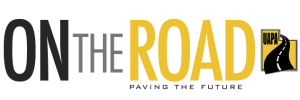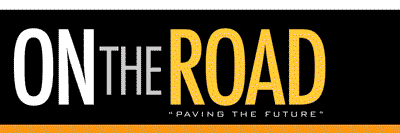Preventing suicide occupies people’s thoughts in various industries: teaching, food service, emergency first responders, air traffic controllers, and the construction/asphalt industry. When suicide happens, it affects not only the families and friends of the victim but co-workers too.
According to SAFE.org, there is one suicide death every 11-and-a-half minutes, and for every suicide death, there are 25 suicide attempts. It is the twelfth leading cause of death in the U.S.
Less than three years ago, the Centers for Disease Control and Prevention reported that the construction industry (including asphalt production) had one of the highest rates of death by suicide – 5,242 in 2018 – a number five times higher than jobsite fatalities in the U.S. On the first day of Suicide Prevention Month 2022 (September), Associated Builders and Contractors called upon the entire construction industry to strengthen human health and decrease the number of deaths by suicide among its workers.
“This is a national tragedy, and we must end these unprecedented, unacceptable and devastating deaths among our colleagues,” said Greg Sizemore, ABC vice president of health, safety, environment and workforce development. “Construction workers work with tools every day, and we must equip these 7.7 million workers with the tools they need to prioritize mental health and protect their emotional well-being. They will use them.”
Indeed, the idea of skyrocketing numbers of suicide victims within the construction industry came to the attention of the Construction Financial Management Association (CFMA) in 2016. The group, now known as the Construction Industry Alliance for Suicide Prevention (CIASP), gathers support from unions, associations, contractors and mental health organizations across the nation. Some of the largest organizations in the construction industry support CIASP’s efforts, including the Associated Builders and Contractors, the National Association of Home Builders and The Associated General Contractors of America.
“It is time to shatter the stigma surrounding mental health issues with the goal of creating a zero-suicide industry.”
“The risk factors for construction workers aren’t new,” said Michelle Walker, a CIASP board member who also serves as VP of finance and administration at SSC Underground in Phoenix. “A stoic, independent, tough-guy mentality may keep workers from seeking help. Others may not offer help because they don’t feel comfortable intervening.”
According to The Asphalt Pro, Ajax Paving Industries in Florida decided to confront the topic of suicide within their industry head-on. They held departmental meetings with all their teams, determined to get right to the complex issue of mental health. However, it was difficult to get people to really open up about such a complicated issue. So, when the meetings failed, Ajax leadership hosted a Safety Day in January 2022. Over 430 employees attended. While not explaining the entire situation, Vince Hafeli, the company president, explained that “he had been there.” Although he did not share details, his statements resonated.
Afterward, employees were more open to discussing the topic, thanking management for giving them resources, claiming it was long overdue, and proclaiming it a “great discussion on mental health.”
Ajax Paving continues its journey to mental wellness and took the pledge with CIASP.
Some things to consider: men are twice as likely to die by suicide as women, and the demographics in the industry certainly play a role: over 96% of workers are men. Other risk factors might involve chronic pain due to the physicality construction jobs demand, substance abuse, shift work that often disrupts sleep, and time away from home.
In the construction industry, three workers will die from work-related accidents on any given day. But 15 will die from suicide.
“It is time to shatter the stigma surrounding mental health issues with the goal of creating a zero-suicide industry,” said Sizemore. “Employers can build a resilient workforce by providing access to resources to improve total human health: physical, mental, emotional, social . . . intellectual, financial, occupational and spiritual wellness.”
Employers should incorporate mental health protections to prevent suicide in the workplace. But before doing this, they must first recognize the warning signs of a potential suicide. Those signs include:
- Appearing sad or depressed
- Increased tardiness and absenteeism
- Talking about feeling trapped
- Expressing a desire to die
- Decreased productivity at work
- Isolating from others at work
- Extreme mood swings
- Increased use of drugs or alcohol
- Decreased self-confidence
- Feeling hopeless and helpless
- Sleeping too much or too little
- Acting anxious, agitated, or reckless
- Neglect of appearance of hygiene
- Withdrawing from family and friends
- A feeling of being a burden to others
- Decreased problem-solving ability
The CIASP developed a Suicide Prevention Integration Checklist to assist construction companies in building their mental health promotion and suicide prevention in the workplace. This checklist was designed for company leaders to evaluate who will be responsible for its implementation. Since every company is operated differently with unique needs and resources, some parts of the list might only apply in some situations.
The Integration Checklist is broken down into five parts:
- Corporate attention to and consideration of mental health
- Resources in place for employees dealing with mental health issues
- Readiness within the company to deal with suicidal employees
- Building protective factors
- Crisis response
Click the clink below to download the Suicide Prevention Integration Checklist:
https://www.nahb.org/-/media/NAHB/advocacy/docs/legal-issues/construction-liability/trending-now/suicide-prevention-analysis-integration-checklist.pdf
Once a company has conducted its analysis and understands the readiness and need for implementing the checklist, take action to determine who might be in need. Importantly, this checklist should not be considered a “one-and-done” portion of a company’s processes and procedures. It should be a fluid, ever-present, update-when-necessary segment that is reviewed, studied and trained frequently. All managers, supervisors and even line employees must be aware of the company’s commitment to addressing risk factors and preventing suicide.
CIASP wants to encourage construction industry employers to do whatever it takes to prevent possible suicides. They suggest making suicide part of company conversation so that talking about it becomes easier and less formal to get people comfortable with the topic. They ask that everyone STAND up to prevent suicide in the construction industry:
Safe: Create a culture in which team members feel safe to ask for help or speak up if concerned about their fellow co-workers.
Training: Make suicide prevention training available to all team members so they can recognize the warning signs and be equipped to help those at risk.
Awareness: Raise awareness by sharing the message of suicide prevention through organizational activities such as training, safety meetings, toolbox talks, team meetings, newsletters, and social media posts.
Normalizing: Normalize the topic of suicide prevention as a health and safety priority by talking about suicide, suicide prevention, and mental health.
Decreasing: Help decrease the risk of suicide in construction by ensuring all team members have access to an awareness of CIASP’s action plans, behavioral health benefits, screening tools, community crisis support, the suicide prevention lifeline, and crisis text line.
Something else to consider: suicide postvention. Postvention is described as the provision of crisis intervention and other support after a suicide has occurred to address and alleviate possible effects of suicide. The impact of traumatic events often leads people to react impulsively in ways that might cause further damage. It is important to stabilize your workforce as soon as possible to facilitate a return to what will certainly be a “new normal.”
Perhaps the easiest way to present the message that your company takes addressing and preventing suicide seriously is to make sure they see that you do. You can easily do this with posters strategically placed in breakrooms, kitchens, restrooms, hallways and other communal spaces. The message does not have to be grand in nature nor elaborate in design; post the following information:
Help is within reach:
- Visit www.preventconstructionsuicide.com
- Call 988 or 800-273-TALK (8255), the National Suicide and Crisis Lifeline
- Text “HOME” to 741741, the Crisis Text Line
- Visit www.crisistextline.org
- Visit mentalhealthscreening.org for a mental health screening
While suicides do not usually happen at work, this does not mean they cannot or that the industry is not suffering substantial costs. Implementing any – or all – of the suggestions outlined above can go a long way to making your business, and the asphalt industry, more prepared in the event of a tragedy.
Something extra for UAPA members: You can watch the webinar “Shining Light on Mental Health & Suicide Prevention” presented on March 2, 2022, to the Women of Asphalt by Cal Beyer, vice president of Holmes Murphy & Associates, and Vince Hafeli from Ajax Paving. This webinar is hosted at the Women of Asphalt website on the Conversations to Lead and Inspire page, you can find it online at youtube.com/watch?v=hgvBKRqFoAA







